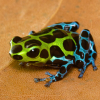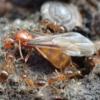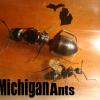I've read through a lot of journals on this forum and others and they seem to be all follow the same pattern as my colonies, growing fine at first but then eventually brood growth becomes arrested at early larval stages, the queen stops laying and the colony will just sort of stagnate with very little activity until eventually it dies off. I really can't find a single instance of someone catching a Camponotus queen and raising a colony to the point where alates are produced.
I've tried all different sorts of nests, temperatures, humidity levels, etc. I always get the same results.
I've heard all sorts of explanations for this,them being slow growing is the number one, but I'm not sure I believe this.
This paper:
https://www.research...d_diet_for_ants
Indicates that Camponotus species require a complicated diet that it is not easy to replicate in captivity and that colony collapse is inevitable after a few generations without nutrients/minerals they have access to in the wild that they typically wouldn't get in captivity. It certainly seems to explain my experience. I've been trying to replicate this diet but I'm having a hard time finding some of the chloride salts which according to the paper are vital. A lot of this seems to have to do with an endosymbiotic bacteria that is found in their gut.
Just curious as to what people's thoughts on this are and whether anybody has successfully started with a queen and raised a Camponotus colony to the point where it was producing majors/alates, and if so,what did you do? I'm starting to wonder if keeping this genus long term is really possible without a ridiculous amount of work making food for them.
Edited by Runner12, March 31 2017 - 2:50 PM.























